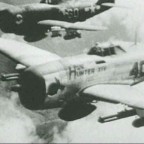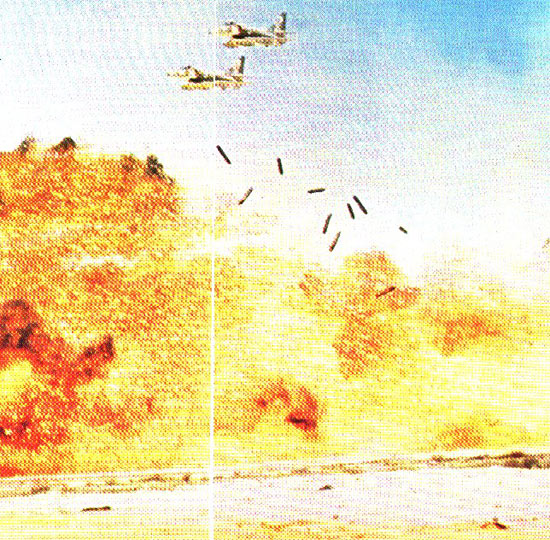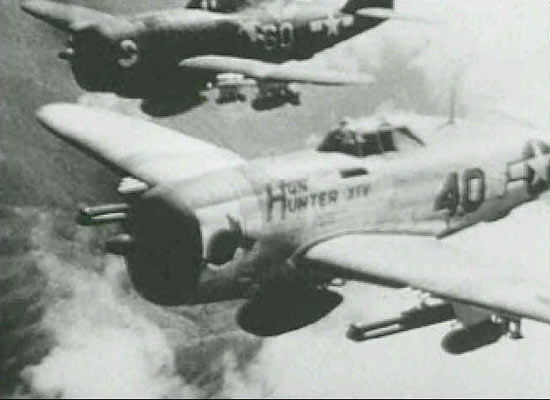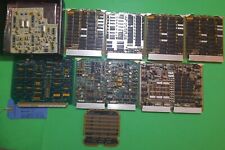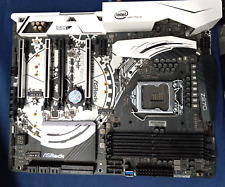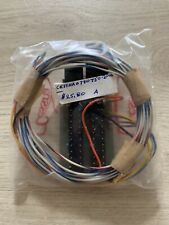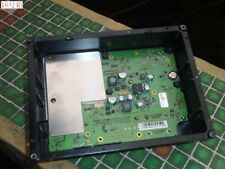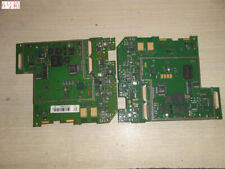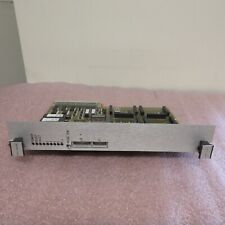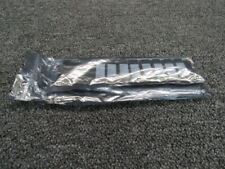by Andy Bush

Fig 1 – A2G WW2 Style
Introduction
In the first two parts of this series on the basics of air to ground (A2G) weapons delivery, we concentrated on bombing. Now let’s move on to rocket and gun employment. Many of our newer sims (MiG Alley is a good example) let us get down and dirty with rocket salvos and low altitude strafing runs. These sims offer greatly improved graphics that accentuate the feeling of ‘immersion’ in these attacks. As the popularity of these attack types have increased, so have questions regarding the theory and practice of rocket and gun employment. This article will provide some insight on this subject.
Background
At the heart of rocket and gun employment is the understanding that the delivery of these weapons is dependent on the same variables and academic principles that affected bomb deliveries. With that in mind, here is the purpose of this article:
This article will present a simplified explanation of manual rocket and gun employment as it pertains to the typical air combat simulation. In this context, ‘manual’ means that the delivery of these weapons is accomplished without the use of computer derived aiming systems (for example, CCIP deliveries).
How am I going to do this? I’ll begin with a brief review of weapons delivery theory, and then I’ll move on to discussing tips and techniques for use in our sims. I want to establish the foundation of weapons delivery theory so that you understand how real world rocket and gun attacks ‘work.’ Then we will cut to the sim world and explain how real world theory may or may not play a part in sim play.
Does this imply that our sims may not replicate actual rocket and gun delivery principles? The answer is ‘yes’…in most cases. How so? Simple answer…most rocket and some gun delivery parameters require the use of a depressed gunsight reticle. We cannot depress the gunsight in our sims. In our sims, we get a HUD that has a gunsight reference that is a ‘one size fits all’ aiming reference. We might even call this HUD reference a ‘fixed’ sight. The next section will use weapons delivery theory to explain why this ‘fixed’ sight may not replicate an accurate aiming reference.
This will be a ‘quick and dirty’ walk through of the subject. If you want more specifics, please see the first two articles in this series.
Weapon Ballistics
When we release a weapon from our aircraft, that weapon initially has our velocity vector for its flight path…if we are pointed at the target, so is the weapon. But then gravity takes over and changes the weapon’s flight path. The end result is that the weapon impacts the ground along our flight path but at a point short of the target. The following figure shows this.

Fig 2 – Bomb Fall Line

